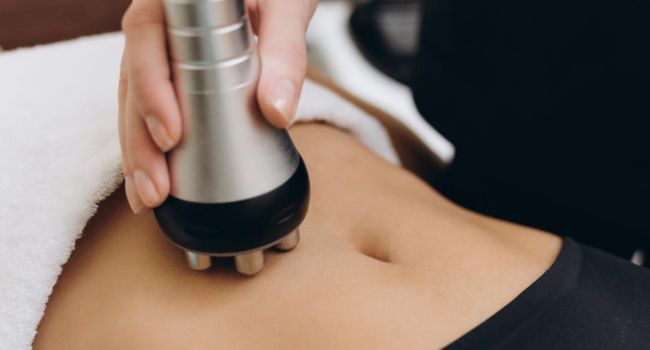Table of Contents
Body Contouring Technique
Imagine using gender-specific targeted solutions to achieve the body form you’ve always wanted finally. Today, embrace a more defined version of yourself, feel fantastic, and look amazing! Body contouring is a technique that uses a body contouring machine to remove the extra skin and fat cells from the body to change its shape. The removal of love handles, arm lifts, stomach tucks, and man breast removal are among the most popular treatments for body contouring, according to physicians and aesthetic clinics that offer these services.
Body contouring procedures have become more popular recently among men and women who want to improve their appearance and shape their bodies. While men and women may have comparable aims for body contouring, such as eliminating stubborn fat deposits, toning muscles, and enhancing overall body shape, there are some noticeable distinctions in men’s and women’s anatomy, aesthetic preferences, and methods of treatment.
This article delves into the subtle differences between body contouring for men and women, highlighting the unique factors and results that apply to each.
Body Composition and Anatomy
Men and women differ anatomically and physiologically, which is one of the main factors determining body-sculpting operations. Men usually have lower body fat and a more significant muscle mass percentage than women because of hormonal and genetic differences. As a result, the distribution of fat deposits and muscle growth varies significantly between the sexes.
Men frequently have concerns about their abdomen (to get rid of love handles or a bulging belly), chest (to get rid of extra breast tissue or have a more defined chest), and flanks. However, because these regions tend to gain fat because of hormonal impacts, women may seek body contouring procedures to target areas like the arms, buttocks, hips, and thighs.
Goals and Preferences in Aesthetics
Men and women may have different tastes and aims regarding body contouring. Although the general methods and approaches might be the same, the goals and areas of emphasis might change depending on gender-specific physical appearance and attractiveness standards.
While body contouring can help both men and women achieve a leaner, more contoured physique, their aesthetic preferences and goals can differ significantly. Men have always preferred to look more athletic and muscular, focusing on developing a “V-shaped” torso and improving muscle definition. Men’s body contouring operations frequently emphasize highlighting muscle outlines and minimizing localized fat deposits to achieve a more chiseled appearance.
On the other hand, women can choose a softer, curvy silhouette with well-defined waistlines and sculpted posteriors. Women’s body contouring procedures frequently focus on cellulite and extra fat areas, sculpting naturally occurring curves and contours to produce feminine proportions.
Techniques and Modalities of Treatment
Body reshaping procedures need to be customized because men and women have different anatomical structures and aesthetic goals. Both genders may benefit from many of the same procedures, but depending on each person’s requirements and preferences, various treatment plans and focus areas may be used.
For instance, liposuction, a popular body sculpting technique, can be used on both men and women to remove stubborn fat deposits from particular body parts. However, the methods used during liposuction—like using smaller cannulas or adjusting the suction settings—may change based on the patient’s anatomy and the intended result.
Similarly, localized fat deposits in men and women can be reduced with non-invasive techniques like ultrasound cavitation or cryolipolysis, also called CoolSculpting. However, treatment procedures and applicator sizes may be changed to account for variations in body form and fat distribution across the sexes.
Recuperation and Aftercare
The recovery period and post-treatment care requirements are other factors that set male body contouring apart from female body contouring. Although the fundamental concepts of tissue healing and recovery are the same for both sexes, the recovery process may vary depending on several variables, including activity level, pain threshold, and expectations regarding appearance.
In actuality, the degree of healing needed depends on the patients’ line of employment. Male and female liposuction recovery is essentially the same because men typically work more physically demanding jobs. Men should, therefore, take it easy and rest for up to four weeks.
Compared to women’s recuperation times, this is significantly longer. Nonetheless, if women work in physically demanding jobs, they might come across similar rehabilitation recommendations.
After body contouring treatments, men, who frequently have higher pain tolerances and may be better acclimated to intense physical activity, may recover more quickly and return to normal activities sooner. On the other hand, women could need more time to rest and recover, especially if they are having many treatment sites treated at once or if the process entails more extensive tissue manipulation.
Post-treatment care programs can also be customized to address gender-specific issues like skincare, clothing choice, and scar maintenance. Men might favor compression clothing that offers support and compression without restricting the range of motion, whereas women might choose clothing with the advantage of shaping and style.
Final Thoughts
In conclusion, the differences in body contouring for men and women highlight the significance of individualized treatment approaches, even while the objectives of the procedure—obtaining a more shaped physique and boosting body confidence—might be universal. To achieve maximum results and patient satisfaction, it is crucial to comprehend the inherent anatomical variances, aesthetic preferences, and recovery factors connected with each gender.
Finally, body contouring should be viewed as a cooperative process that includes the patient and their medical professional, focusing on customizing procedures to meet each person’s requirements and goals. Body contouring machines can assist people of all genders in achieving their desired aesthetic objectives and embracing their bodies with confidence and pride by acknowledging each individual patient’s distinctive traits and aims.

